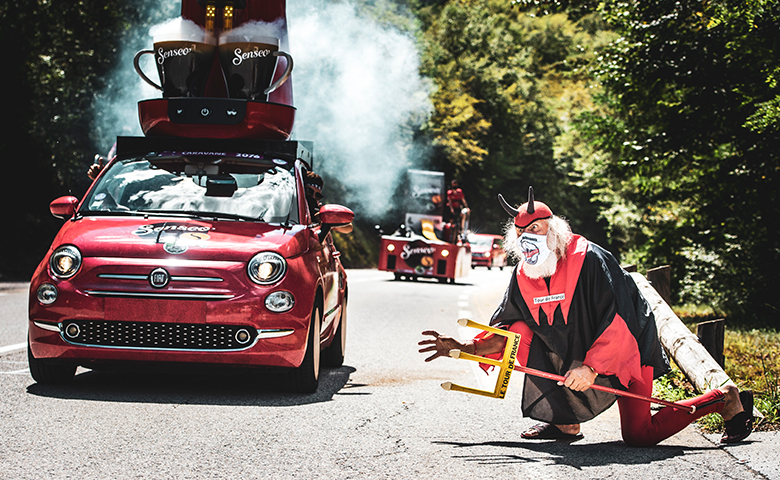
# Cycling
Tour de France travel
Must-see sights and must-do experiences along the route of the Tour de France 2021
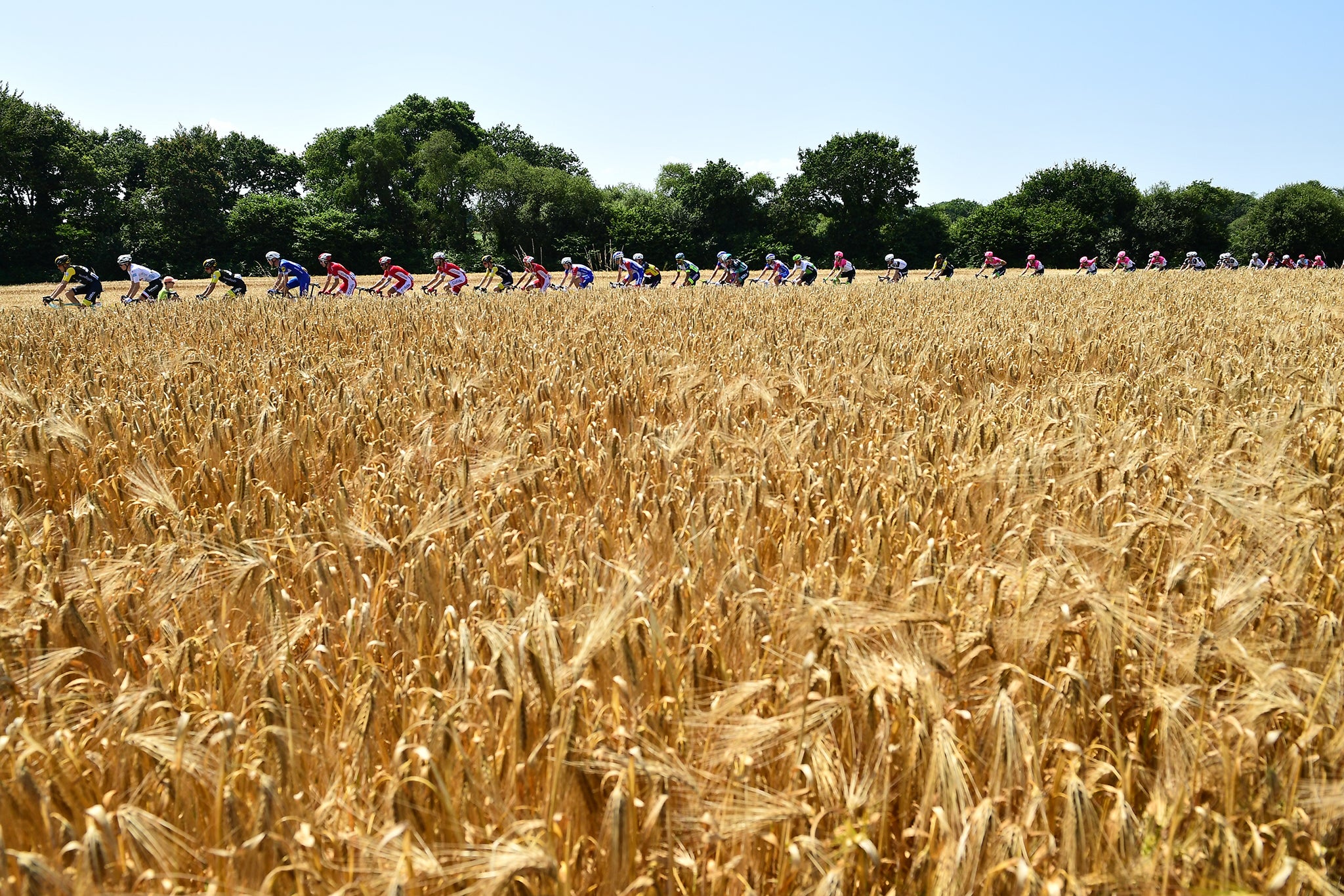
The Tour de France isn’t just one of the world’s largest sporting events. It is also the world’s most extensive travel advertisement. As the race makes its way through France, billions of viewers all over the world follow more than 100 hours of televised footage from some of the country’s most scenic regions. Whether you are planning to follow Le Tour as an on-site spectator this year, become inspired to spend your next holiday in France while watching the live stream, or simply want to find out more about the destinations the riders whizz past on this year’s route, we’ve got you covered.
Read on for our five highlights from the Tour de France route, stage-by-stage, and find out why they’re always worth a visit, not only this summer.
Stage 1 to 4: Brittany
Brittany is a unique département, both geographically and culturally, with strong ties to Tour de France history. Its bays and beaches, islands and peninsulas add up to one third of the French coastline. Its proud and fiercely independent culture is influenced by ancient Celtic traditions and long-standing ties to Great Britain. Brest, a naval port on the Atlantic, will be hosting the Grand Départ for the fourth time in history this year, kicking off four stages taking in coastal roads and inland stretches.
Tour tip: Cycling fans and TDF enthusiasts will want to visit Mûr-de-Bretagne, a climb so legendary, the riders get to climb it twice this year.
Taste of Brittany: Add a bit of 'je ne sais quoi' to your home viewing experience by frying up some galettes. The savory buckwheat pancakes are unique to the area and best served with a glass of cidre.
Cycling tip: The name of Brittany's Côte Sauvage coastal road on the Quiberon Peninsula must be inspired by the wild scenery. Rugged cliffs alternate with windswept beaches and wave-beaten rocks, but the coastal road offers a short, smooth ride by car or a leisurely half-day cycle. The Tour de France bypasses the peninsula on Stage 3, but it’s well worth the detour.
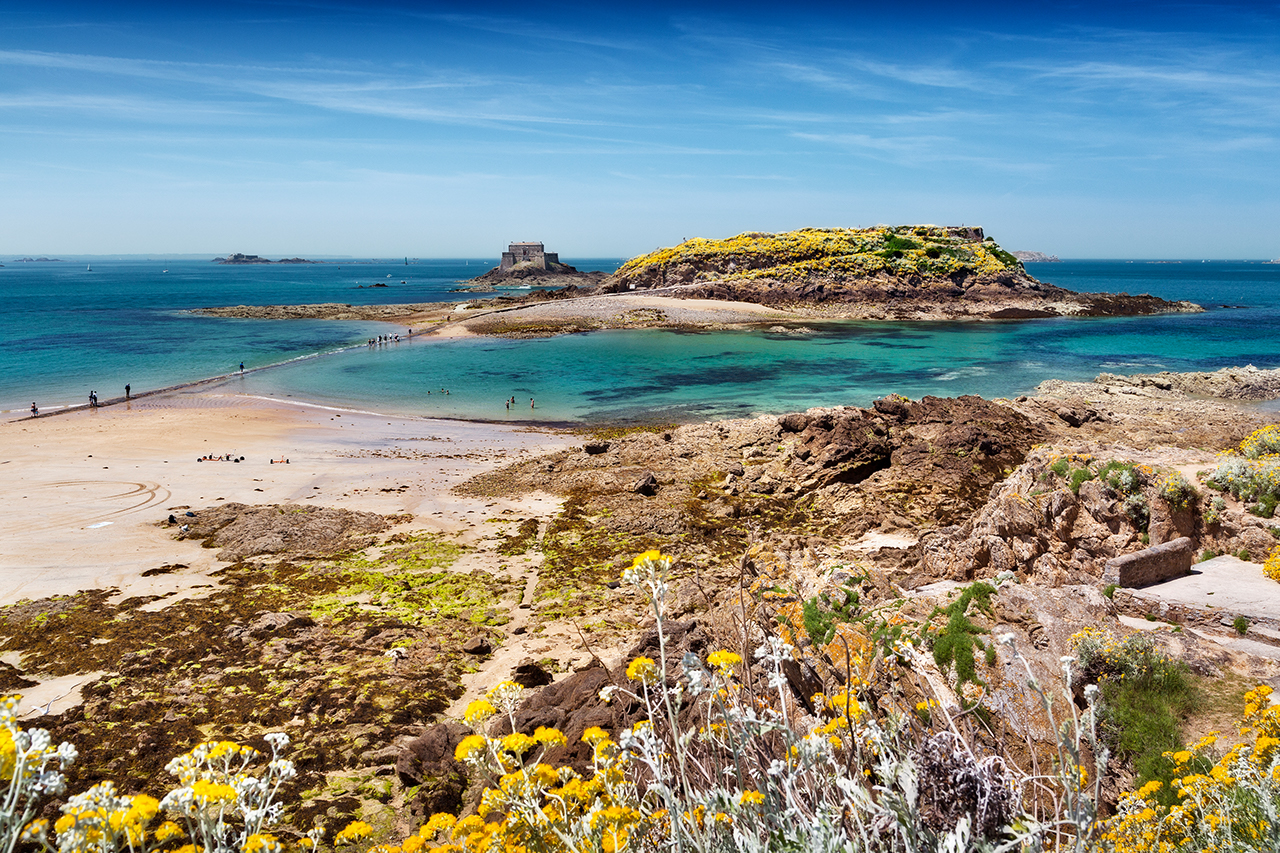 TDF riders will pass Brehat Island on Stage 2 in Brittany
TDF riders will pass Brehat Island on Stage 2 in Brittany
Stage 8 to 10: French Alps
The towering peaks, winding roads and spectacular vistas of the French Alps are a marvel at any time of the year. In winter, they are home to some of the most famous and exclusive ski resorts in the world. In summer, they offer excellent hiking, mountain biking, as well as quaint villages and serene alpine lakes. During the Tour de France, they are the place where iconic scenes play out, legendary mountain stages are decided and champions are crowned. Be sure to get there early for a good spot!
Tour tip: Alpe d'Huez, probably the most iconic summit finish, usually draws hundreds of thousands of supporters from all corners of the globe and temporarily turns the mountain road into a veritable festival site. It’s not on this year’s route, but that doesn’t mean amateur cyclists can’t incorporate it into their personal tour. To tackle the famous 21 bends, you need to be in seriously good shape!
Taste of the Alps: The regional cuisine is extremely cheesy, with fondue, raclette and Savoie specialty Tartiflette all featured heavily on chalet menus. Don’t over-indulge if you’re watching from your couch!
Cycling tip: Once you leave the Autoroute at Grenoble, there’s no such thing as a non-scenic road as you head into the Alps. La Route des Grandes Alpes, which stretches all the way from Lake Geneva to the Mediterranean, takes in iconic TDF highlights like the Col du Galibier and Col d’Izoard along the way.
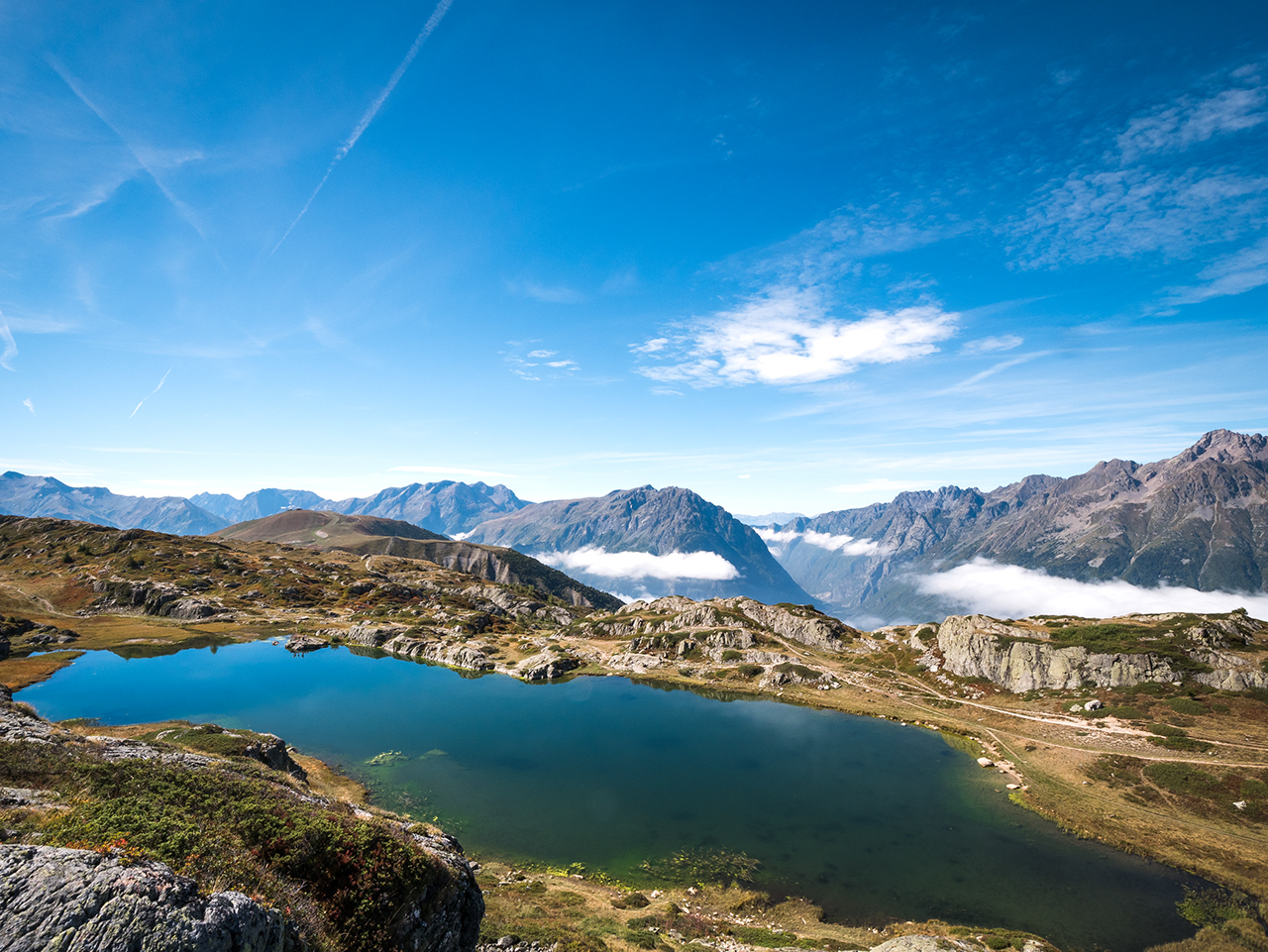 The French Alps are beautiful in summer and winter
The French Alps are beautiful in summer and winter
Stage 13/14: Carcassonne
The finish of stage 13 and start of stage 14 in this walled city offer an opportunity to explore some history alongside the sporting heritage of the region. The city’s medieval fortress, a UNESCO World Heritage site, draws huge crowds during high season, so avoid it during the summer – unless, of course, you want to be there for the Tour de France.
Tour tip: Unlike some remote mountain towns that can be hard to reach and even harder to find accommodation in, the city’s infrastructure makes it an easier race viewing destination. With the finish of one stage, followed by the start of the next, it offers two opportunities to watch riders in an atmospheric setting before they head off for the Pyrenees.
Taste of Carcassonne: If you have a sweet tooth, sample the eponymous Carcassonnais pastries and a whole host of other delicacies.
Cycling tip: The Canal du Midi is perfect for cyclists, but you can also follow it by car. The 17th-century canal is part of the 500-kilometer Canal de Deux Mers, connecting the Atlantic to the Mediterranean..
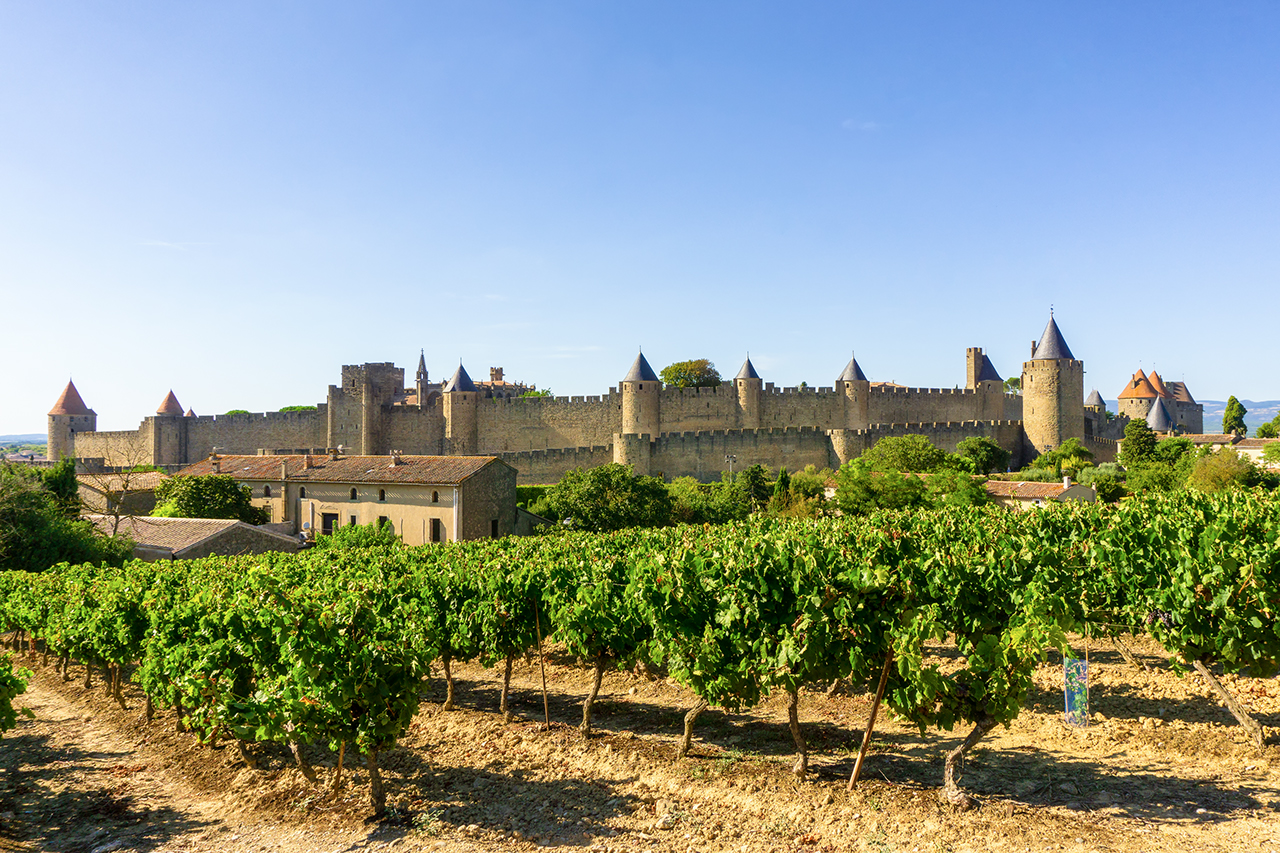 Carcassonne will see two TDF stages in 2021
Carcassonne will see two TDF stages in 2021
Stage 19: Bordeaux
As the Tour de France exits the Pyrenees, its route passes through the Bordeaux wine region. You don’t need to be a connoisseur to know that some of the famous and most expensive wines in the world grow here. You may, however, not be aware that the city that gives the region its name is also known as the Paris of the South. In recent years the reinvention of former industrial quarters has added a hip, urban edge to the genteel, neoclassical heart of the city.
Tour tip: It’s not the first place you associate with the Tour de France, but the first Tour ever stopped in Bordeaux in 1903. No doubt the riders enjoyed some fine wine, which was a perfectly normal resfreshment for athletes in those days.
Taste of Bordeaux: If you’re visiting the region, this is the place to do some serious wine tasting. Obviously.
Cycling tip: There are several popular wine tasting cycling tours and road trips across the region. Remember that tasting doesn’t mean drinking, especially if you’re behind the wheel or in the saddle, so sip and spit instead! You can even enjoy the views without stopping for tastings along the way.
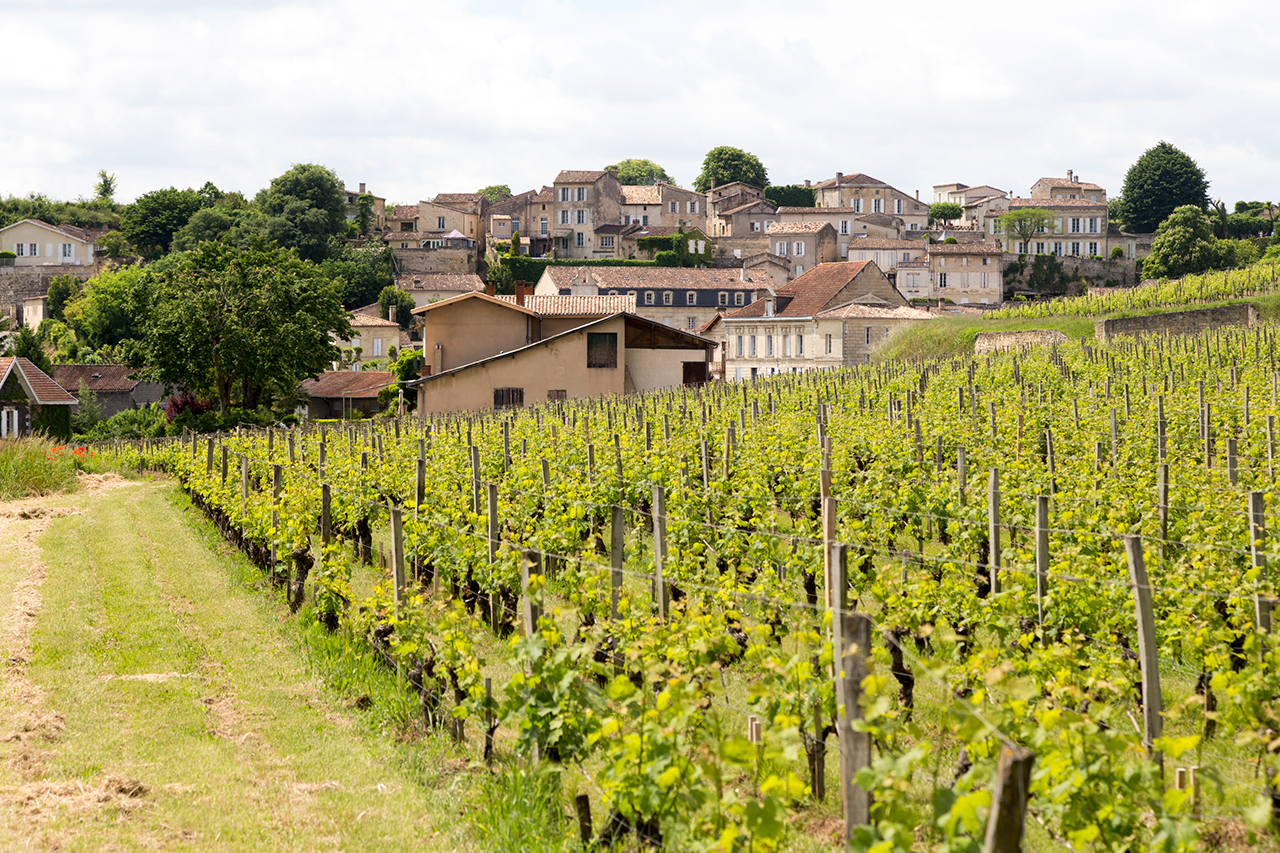 TDF riders will pass the vineyards of Saint-Émillion, Bordeaux, during stage 19
TDF riders will pass the vineyards of Saint-Émillion, Bordeaux, during stage 19
Final stage: Paris
The top of the Eiffel tower, a Seine boat tour, a visit to the Louvre… and viewing the final stage of the Tour de France at the finish line. There are many reasons to visit Paris, but for cycling fans, a front-row, first-hand experience of this key race moment is the must-do experience!
Tour tip: The Tour de France finish line has been at the Arc de Triomphe since 1975. While the cyclists suffer a bumpy ride on the cobblestones of the Champs-Elysees, the spectators lining the street feel the goosebumps leading up to the grand finale.
Taste of Paris: The final stage starts with a Champagne toast, so home race viewing should definitely involve a glass of bubbly, too.
Cycling tip: Paris has become increasingly cyclist-friendly in recent years, so hop on one of the omnipresent city bikes and choose a sightseeing route.
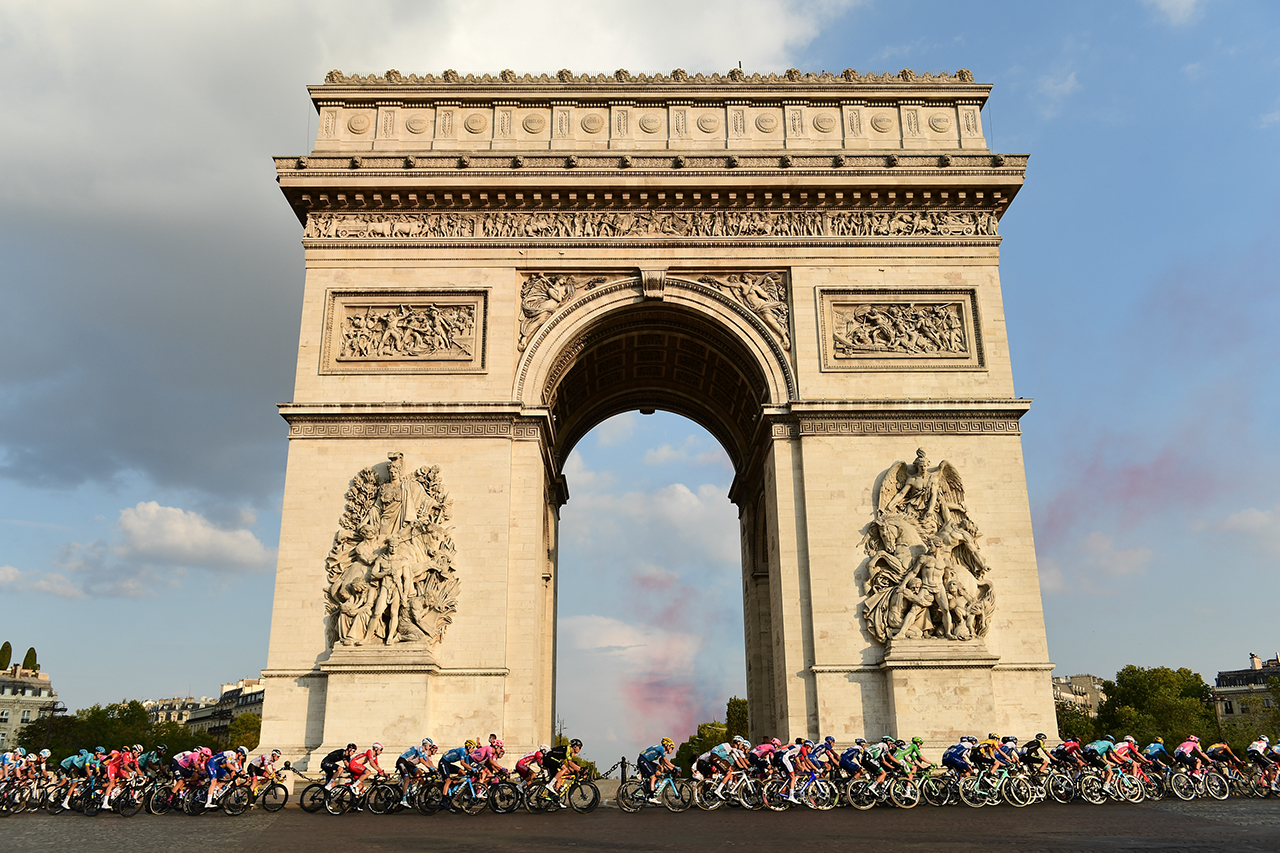 Arc de Triomphe Tour de France finish line © A.S.O/Alex Broadway
Arc de Triomphe Tour de France finish line © A.S.O/Alex Broadway
